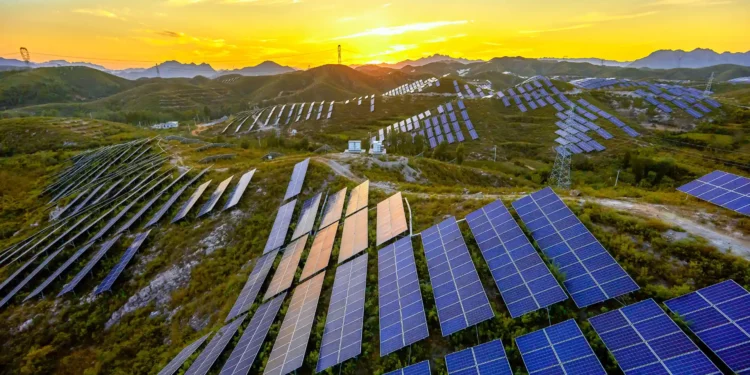The Australia-Asia Power Link is slated to generate about 6GW of renewable energy.
On August 21, Australia stated that the country had given the clearance for a solar project worth AUS $20 billion (USD $17.6 billion). From a giant solar farm located in the north of the country, the project plans to ship energy to Singapore through a 4,300km undersea cable.
The project, which will be developed in two stages, seeks to provide up to four gigawatts of green electricity to large-scale industrial users in Darwin, Australia’s Northern Territory capital.
SunCable, owned by billionaire software entrepreneur and climate activist Mike Cannon-Brookes, says the project will meet up to 15% of Singapore‘s energy needs once completed in the early 2030s.
The Australia–Asia Power Link is slated to generate about 6GW of renewable energy. Almost one-third of which would be transmitted to the Southeast Asian city-state via an undersea cable.
The Environment Minister of Australia, Tanya Plibersek stated that the Australia-Asia power link project owned by Sun Cable’s flagship would act as a catalyst in order to meet the increasing demand for renewable energy at home and in a foreign country.
Australia’s Environment Minister Tanya Plibersek declared on Wednesday that 14,300 jobs would be generated by the 12,000-hectare (29,650-acre) solar farm located in the Northern Territory, making Australia a “renewable energy superpower”.
Despite the fact that nuclear power is currently illegal in the country, the opposition coalition proposes developing nuclear facilities to replace coal-fired power by 2050.
The approval of the project came into existence with strict conditions in order to protect nature and the 12,000ha project must avoid the habitat of greater bilby, which are small rabbit-like marsupials with long floppy ears, Ms Plibersek said.
The billionaire Mike Cannon-Brookes, the owner of Sun Cable, made a statement that the government of Australia made the decision under the vote of confidence in the project and the company as “responsible stewards of the local Northern Territory environment”.
The project faces many other regulatory hurdles which also includes assessments by authorities in Singapore and Indonesia despite winning the environmental approval in Australia.
The project was thrown away and the future looked blurry back in January last year amid the dispute between Cannon-Brookes and fellow billionaire backer Andrew Forrest over the direction of the company, Sun Cable went into voluntary administration.
The co-founder of tech firm Atlassian, Mr. Cannon-Brookes who has turned into an environmental activist in 2023. He stated that the foreign investors would be drawn to the project as it was viable.
Sun Cable was in the conversation about the conditional approval for the project’s cable inter connector component with Singapore’s energy regulator and with the government of Indonesia on building the cable in its water.
The Northern Territory government and the territory’s environment watchdog gave clearance to the project in July. In May, Cannon-brookes revived the bid after a consortium led by him won and took control of the company’s assets.
Australia is the country where coal and gas have remained to be the largest sources of electricity generation irrespective of the growing use of renewables with energy being the politically fraught issue in the country. Being the largest exporter of oil and gas, the country has been ravaged by the effects of climate change. From intense heat, floods and bushfires, the country has faced it all. Being the one of the most enthusiastic adapters of household solar panels in the world, the country has been slow in terms of fully embracing renewable energy.
According to the most recent official data, renewables accounted for 32% of total power generation in Australia in 2022, compared to coal’s 47% share.
Amanda McKenzie, CEO of the Climate Council, said the new solar centre was a huge step toward making Australia a “clean energy powerhouse” and that such projects were crucial in delivering cheap power and reducing climate pollution.


















